As a country steeped in culture and history, it’s hardly a surprise how bathing is regarded as a fundamental aspect of Japanese life. Onsen, as hot springs are known in Japan, have been a part of Japanese culture for thousands of years. It is also one of its most unique and relaxing experiences. Typically, it is a communal and social affair — an opportunity for family and friends to enjoy each other’s company and catch up.
Japanese onsen are highly popular among tourists and locals alike. Certain places in the country have even earned a reputation for being onsen towns. From Hakone to Beppu to Hyogo, these are places known to offer the ultimate relaxing and rejuvenating experience via their mineral-rich hot springs.
If you’re planning on visiting an onsen on your next trip to Japan, you’ll want to make the most out of the experience. As such, it pays to have an idea of some dos and don’ts when in these public places. With that in mind, here are some useful things to know before heading to an onsen.
Onsen and sento: What’s the difference?
Onsen literally translates to “hot spring”. These hot water baths are naturally occurring. And they are also rich in minerals known to be beneficial to the human body. There are usually two types of onsen. The first one is the outdoor bath or roten-buro. Then there are also the indoor baths or the noten-buro. Pools in an onsen are typically separated by gender through alternate or separating bath times or through partitions.
On the other hand, sento is a hot bath. Its main difference from an onsen is that it’s not connected to a natural spring. Sento public hot baths can range from basic to elegant. In some cases, there are “super sento” that offer a wide range of services such as baths and saunas.
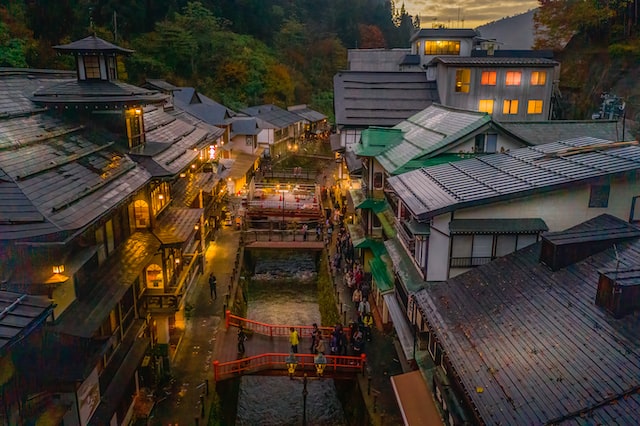
Both onsen and sento tend to look similar at first glance. Both will often have noren, which are long drapes at the entrance. They will usually be marked with the symbol of a hot bath. Because onsen is always close to a natural source of hot water, they tend to be located in rural settings. So, if you see a hot bath symbol in more metropolitan areas, there’s a very good chance that it is a sento.
Why visit an onsen?
Much like Shinto shrines, Buddhist temples, ancient castles, and beautiful Zen gardens, visiting an onsen is very much part of Japanese culture. As they are deeply embedded in the daily life of the Japanese, it is a great way to immerse in their culture. It’s also a way to glean an understanding of the traditions. That being said, there are a number of reasons a visit to an onsen is a must when in Japan.
Relaxation
The warm, welcoming water of an onsen is known for its therapeutic properties. For the Japanese, who are widely known for their incredible work ethic, an onsen visit is a great way to relax and unwind. The soothing water helps relieve stress and sore muscles, making it a perfect place to rest and recharge.
Scenic beauty
Onsens are often located in stunning locations, surrounded by the beautiful Japanese landscape. Taking a dip in an onsen is like taking a mini-vacation in nature. The picturesque scene and being immersed in a warm soothing bath are nothing short of the perfect combination.
Health benefits
It’s believed that bathing in onsen comes with a variety of health benefits. This includes improving improved, stress reduction, and relief for skin conditions like eczema and psoriasis. Onsen water is also said to have mineral properties that are beneficial for the body.
Social experience
Onsens are social places where people gather to relax and chat with friends and family. It’s a great way to meet and interact with locals and learn about Japanese culture and customs.
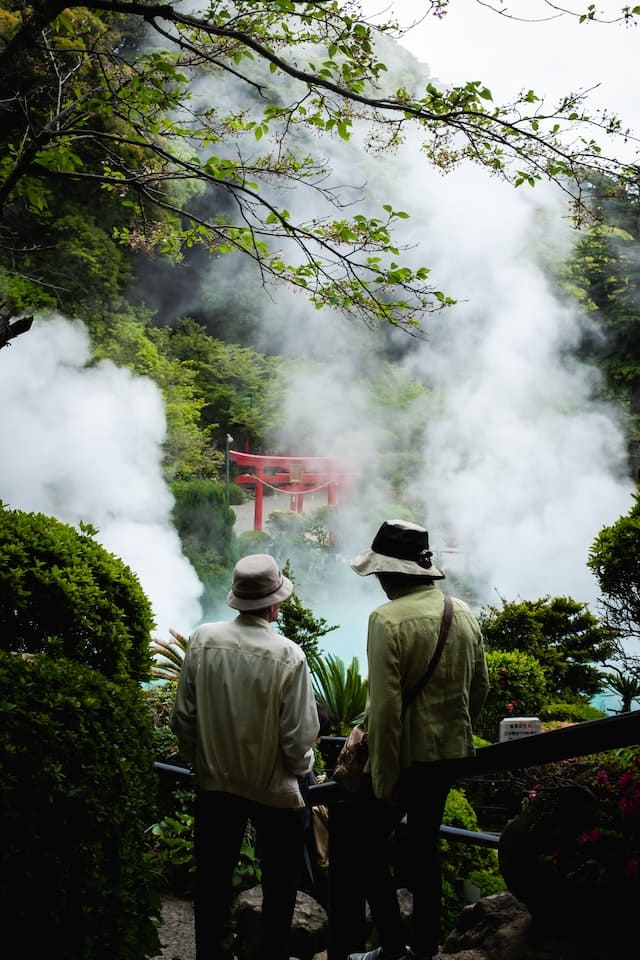
Famous onsen places in Japan
Japan is home to many beautiful and famous onsens, each offering a unique and relaxing experience. Here are some of the best places for onsen in the country:
Hakone
Located just outside of Tokyo, Hakone is a popular onsen destination known for its stunning scenery and hot springs, and of course, stunning views of the iconic Mount Fuji! The area is home to many traditional ryokan that offer hot spring baths with breathtaking views. Being close enough to Tokyo, it is highly accessible and is perfect for a day or weekend trip.
Kinosaki
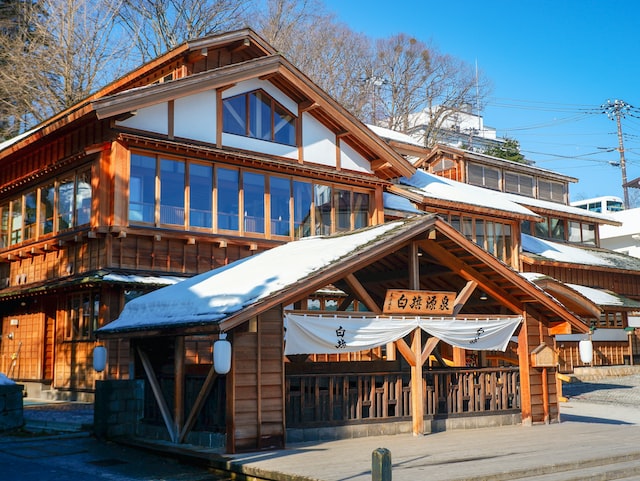
This small town situated in Hyogo prefecture is one of the foremost onsen towns in the country. Its thermal waters are known all over the country making it a favorite destination among onsen enthusiasts. The town is also known for its traditional Japanese inns or ryokan — with dozens serving the town. These inns are also known to offer kaiseki or traditional Japanese meals. If you’re looking for a traditional onsen experience, Kinosaki onsens are the best!
Noboribetsu
Noboribetsu is a hot spring resort town located on the northern island of Hokkaido. Known for its sulfuric hot springs, most of which with temperatures ranging from 25C-42C. Visitors are in for an onsen treat as milk baths, sulfur baths, and outdoor baths are among the dips available. To top it off, the town is also known for its various tourist attractions. It’s also earned a reputation for being a famous family onsen.
Beppu
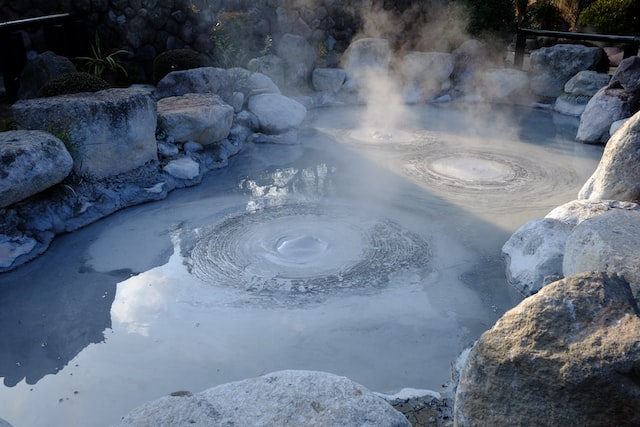
Located on Kyushu island, Beppu is highly popular for its hot springs. A favorite among the locals, it receives over 8 million visits a year from domestic tourists alone. With 8 hot springs, Beppu offers a variety of foot baths and public baths. Among its most famous onsens include Beppu Jigoku Meguri and Beppu Kannawa Onsen.
Important onsen etiquettes
When bathing at an onsen for the first time, it is important to remember that they are different from bathhouses or water parks. Not only are they places of leisure but for light socializing and peaceful meditation. As such, as is the way of the Japanese, there are specific rules that must be observed.
Wash before entering
It’s common for onsens to have a shower area. Typically located outside or within the bathing area, this is where you should wash your body before entering the hot spring. It is unacceptable to enter the onsen with sweat, dirt, or soap on your body. You could be dismissed from the premises if you do. When washing, give yourself a good scrub-down. This way, your skin is properly prepared for the onsen treatment.
Stripping down naked is required
Anything that is worn from towels to clothing to even undergarments is considered “dirty”. Which is why they are never allowed in onsen waters. So, you do need to strip down naked before going in. While this can be a bit of a shock for people going for the first time, there’s nothing to it. Everybody has to do it anyway, and people wouldn’t care what you look like. Plus, this is really part of the authentic onsen experience.
Modesty is expected
While it is true that people soaking in an onsen are expected to get completely naked, modesty is very much appreciated. The small towels you will be provided with should be used to keep your nether regions covered as you walk about.
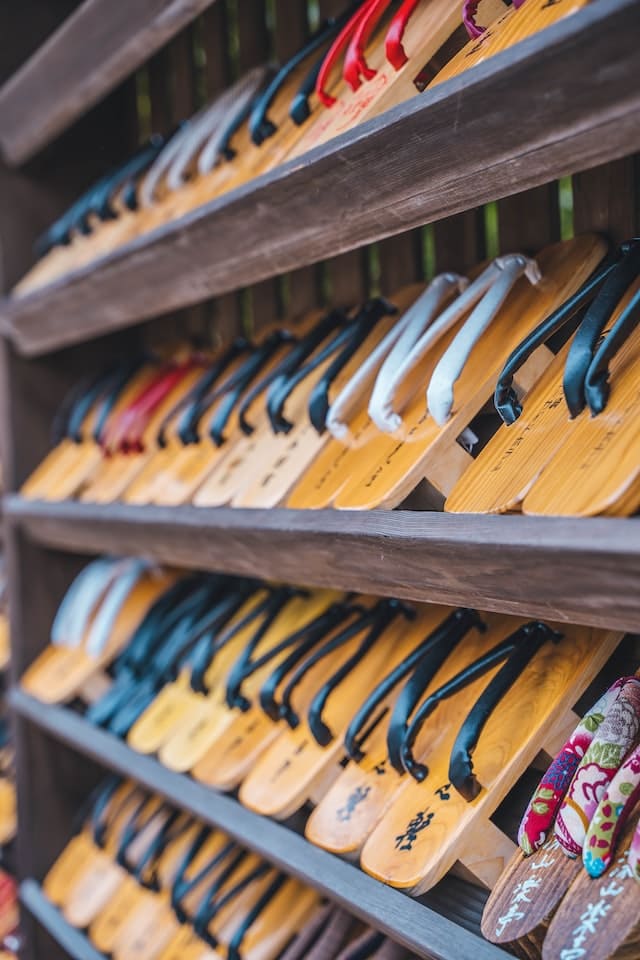
Dunking your head under the water is not allowed
It is forbidden to get your head under the water when dipping in an onsen. This is to prevent any germs in your mouth from getting into the water. Your hair should also not get in the water. This is because hair has oils and grooming product residue that could dirty the bath. If you have long hair, make sure that it is tied in a knot before entering the bath.
Dipping the towel in the water is a no-no

Towels or other items that could be worn are considered sullied and should not touch the water. If you don’t know what to do with the small towel you were provided with while dipping, just wear it on your head. This might seem like a ridiculous idea but this is actually what the Japanese do. And it’s a great way to ensure you won’t lose the towel while soaking.
Tattoos are not allowed
In Japan, tattoos are considered taboo as they are considered to be associated with the Yakuza or the Japanese mafia. Small tattoos that can be covered with a bandage shouldn’t be a problem. If you have visible tattoos, a public onsen is just going to be a no-go for you. However, if you let the staff know ahead of time, there’s a very good chance they will still let you use their facilities. Otherwise, you can still enjoy the onsen experience by booking a private onsen instead. Many ryokan or Japanese inns offer this.
Keep your voice low
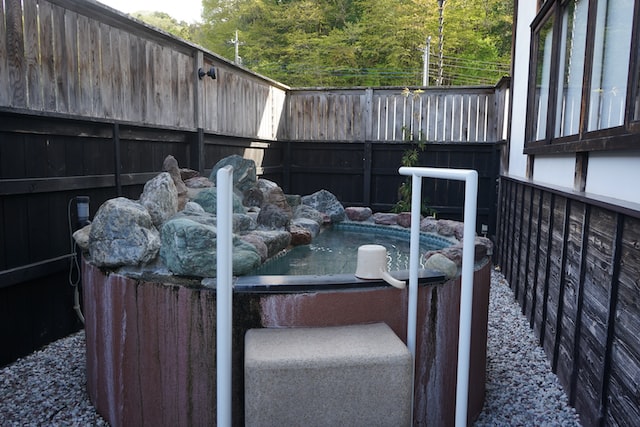
As onsens are social settings, it is not prohibited to chat with your friends while soaking. However, you also have to remember that other people are using the facilities. As it is a place for people to relax and relish in the quietness, it is advised to keep your voices low to avoid disturbing other patrons. Also, avoid making eye contact with other patrons. And definitely don’t stare at anybody!
Onsen etiquette after bath
Once you’re done bathing, try to dry yourself with the small towel you were provided with. Never enter the changing room while dripping wet. Make sure to clean after yourself too and wash the buckets and stools you used before leaving. Most changing areas may have benches and chairs provided for patrons. Make sure you’re fully clothed before sitting on them.
A unique and enriching experience
Whether you are looking for a solo retreat, a romantic getaway, or a family vacation, a visit to a Japanese onsen can offer a therapeutic and culturally immersive experience. To fully enjoy this hot spring experience, it is important to understand the customs and etiquette surrounding onsen culture. With this, you can embark on your onsen adventure with confidence, ready to immerse yourself in the tranquility and unique beauty of Japan’s hot springs.
